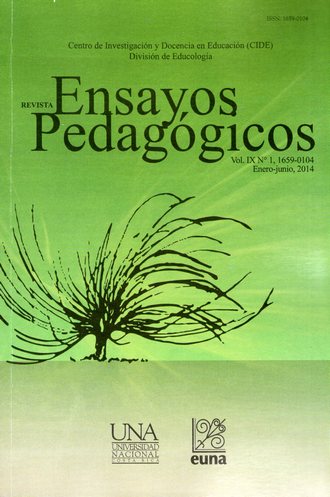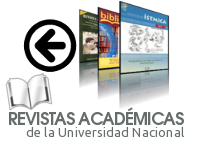The Interactive Whiteboard: Components, Settings, Posibilities, and Singularities
DOI:
https://doi.org/10.15359/rep.9-1.7Keywords:
digital interactive whiteboards, higher education, ICT integrationAbstract
In recent years, Interactive Whiteboards (IWB) have gained a respected space within the academic practitioners in the university context. In this article, we will do a revision of these devices going from their main components, their implications in the teaching-learning process within Higher Education Institutions (HEI) and the way they can be configured in the classroom. We also reflect on the academic possibilities generated from their use and how their components may enhance the classroom experience. In this way –and reflecting upon given specific situations– we compare the singularities of different configurations of the IWB components and the implications for their integration in HEI as justified and useful didactic resources.
References
Armstrong, V., Barnes, S., Sutherland, R., Curran, S., Mills, S. y Thompson, I. (2005). Collaborative research methodology for investigating teaching and learning: the use of interactive whiteboard, technology. Educational Review, 57 (4), 457-469.
Domingo, M. y Marques, P. (2011). Aulas 2.0 y uso de las TIC en la práctica docente. Comunicar, XIX (37), 169-174.
Gallego, G., Cacheiro, M. L. y Dulac, J. (2009). La pizarra digital interactiva como recurso docente. Revista Electrónica Teoría de la Educación: Educación y Cultura en la Sociedad de la Información, 10 (2), 127-145.
Glover, D., Miller, D., Averis, D. y Door, V. (2005). The Interactive Whiteboard: a literature survey. Technology, Pedagogy and Education, 14 (2), 155-170.
Glover, D., Miller, D., Averis, D. y Door, V. (2007). The evolution of an effective pedagogy for teachers using the interactive whiteboard in mathematics and modern languages: an empirical analysis from the secondary sector. Learning, Media and Technology, 32 (1), 5–20.
Guerrero, J. (2009). Introducción de las pizarras digitales interactivas en la enseñanza presencial y no presencial, IV Jornadas Nacionales sobre el Espacio Europeo de Educación Superior, Murcia, España.
Hervás, C., Toledo, P. y González, M.C. (2010). La utilización conjunta de la pizarra digital interactiva y el sistema de participación Senteo: una experiencia universitaria. Pixel-Bit. Revista de Medios y Educación, Enero (36), 203–214.
Jara, A.J., Santa, J., Zamora, M. A., Villalba, G., Guirao, A. y Pinazo, R. (2011). Transferring experience in digital boarda and classroom response system form the Computer Science Faculty to High Schools. Proceedings of INTED2011 Conference, Valencia, Spain.
Marques, P. (2006), Pizarra Digital (1a Ed.). Barcelona: Edebé.
Marques, P., Casals, P. (2002). La pizarra digital en el aula de clase, una de las tres bases tecnológicas de la escuela del futuro. Revista Fuentes, 4 (1), 53-62.
Noda, A. (2009). Pizarra digital interactiva en aulas de matemáticas. Números - Revista didáctica de las matemáticas, 72, 121–127.
Passey, D. (2009). Evolving Forms of Visualisation for Presenting and Viewing Data. En C. O'Mahony, A. Finegan, A. J. Visscher y A. Tatnall (Eds.), Evolution of Information Technology in Educational Management, (pp. 155-167). IFIP International Federation for Information Processing, Boston: Springer.
Ramírez-Martinell, A. y Maldonado, A. G. (2015) Multimodalidad en educación superior. En A. Ramírez-Martinell y M.A. Casillas (coord.). Háblame de TIC, volumen 2: Internet en Educación Superior. Córdoba Argentina: Editorial Brujas.
Quiroz, M. (2012). Entrenamiento Básico, Manual de Guía para el docente, Utilización del Software Educativo ActivInspire (ActivInspire Studio – ActivInspire Primary). Latin America & Caribbean. Promethean Inc
Downloads
Published
How to Cite
Issue
Section
License
Ensayos Pedagógicos is subscribed to the Attribution-NonCommertial-NoDerivatives 4.0 International Creative Commons Licence, which allows both authors and readers to freely download, store, copy, and distribute the final approved publisehd version of the manuscript (post-print) as long as this is done without commercial purposes, no derivative works are generated, and the source and author are mentioned. As well, Ensayos Pedagógicos declares that authors will remain the rightful owners of the copyrights of their work in perpetuity.







